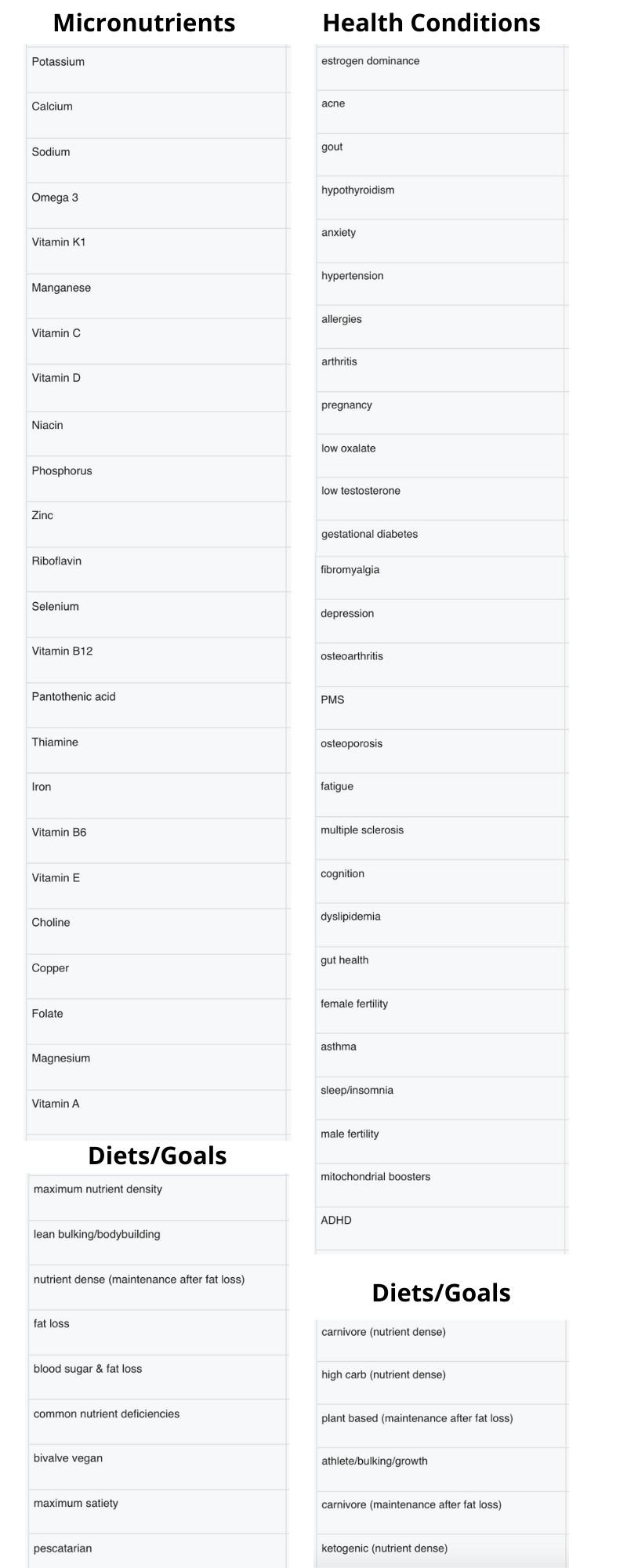
FREE Personalised Food List Bundle
69 Ranked Food Lists
- The best foods for each vitamin and mineral
-
The foods you need to eat when you follow a specific diet (you might be missing key vitamins and minerals)
- Foods you need to eat more of for certain health conditions
We promise not to send any spam - we will send you an email with your download file but you can unsubscribe at any time. Privacy and terms

